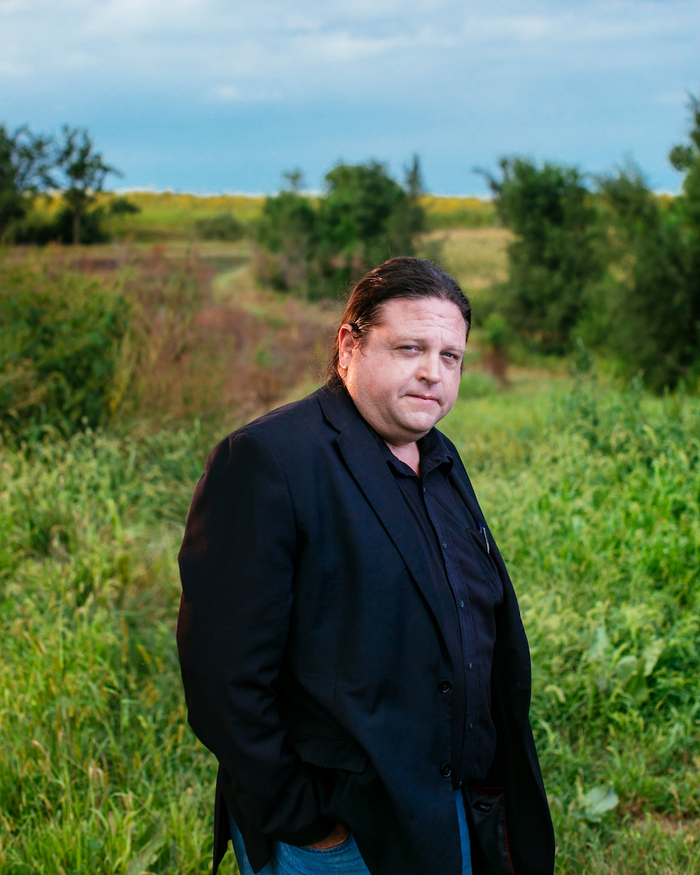Those who take Highway 75 out of Omaha, past Florence and Blair, where sprawling farms mix with swaying grasslands, will see a building with tan bricks and a teal metal roof.
br
“Nebraska Indian Community College,” its facade reads. “Macy Campus.”
br
Michael Oltrogge, the school’s president, has worked tirelessly for NICC there, at campuses in South Sioux City, and at those along the Niobrara River on the Santee Sioux Reservation.
br
The goal has always been the same: provide accessible, affordable education geared toward local tribes but open to all.
br
Accomplishing that hasn’t always been easy. Oltrogge said when he became president, the school was in dire straits.
br
“Right now, I think we’re at a wonderful turning point,” Oltrogge said. “In 2004 I think we were on probation with the higher learning commission, we had over $3 million in debt, and [were] I can’t remember how many, maybe eight, years behind on our audits. [Getting to here] was just a lot of work. A lot of blood, sweat, and tears.”
br
Since then, the school’s found better financial footing, grown its student body, and expanded its academic ambitions. It’s also riding a national wave of increased attention for indegenous issues and community college support. President Joe Biden has appointed the first Native American Secretary of the United States Department of the Interior and is pushing for $1.8 billion to fund higher education. Opportunities like that would help bolster NICC’s mission.
br
“You want to make sure that you keep the best and brightest on the reservations,” Oltrogge said. “That way they can help be the ones making decisions. They can be the ones starting businesses, those operating those businesses—they can be the ones to help move your health care facilities forward.”
br
Tribal colleges grew out of indigenous self-determination movements in the ’60s. Originally started under the Northeast Community College network in 1973, NICC gained its independence by the late ’70s.
br
Oltrogge, who grew up in nearby Lyons, Nebraska, never expected to get into education. In high school, he said he was labeled “educationally unobtainable” by teachers and often got pinned as a troublemaker for having long hair and wearing leather jackets. He found out about NICC through a girlfriend who was a member of the Omaha tribe and came to NICC in 1995. The university’s transfer program allowed him to complete general education courses before earning a bachelor’s degree in management from Bellevue University. He then earned his master's in education administration remotely through Capella University in Minneapolis, where he continued to earn a Ph.D. in leadership in higher education while working at NICC.
br
When he accepted the leadership role in 2004, the campuses were fractured and the institution was in debt.
br
Oltrogge worked with tribes to secure funding, unite the schools, and build faculty. Today they serve about 250 students each year, the majority of whom are Native Americans. They offer courses such as carpentry, business, early childhood education, and Native American studies.
br
Their work, however, goes far beyond the college.
br
When COVID-19 locked down communities in rural Nebraska, many students, especially those on reservations, struggled to stay connected. Few internet providers build infrastructure in these remote communities. Oltrogge lives in Bancroft, Nebraska, (population about 500) and pays $125 for a package that can not run video for virtual meetings.
br
To keep students and communities connected, NICC used federal COVID-19 aid to put signal boosters at local high schools.
br
“One of NICC’s core beliefs is about tribal nation building. And it’s really about empowering our students to help rebuild sovereign nations in their own way,” said Kristine Sudbeck, dean of academic affairs at NICC. “The self-determination and empowerment feature of sovereign nations is huge.”
br
Sudbeck grew up in Fordyce, Nebraska, near Yankton, South Dakota, and came to NICC to study the Umonhon (Omaha) language. In 2016, she accepted a job there as a research and development adviser/faculty member. In 2017, she became dean of academic affairs.
br
It’s important for her to remember that tribal colleges have accomplished a lot, but they’re still getting started in the grand scheme of things. The oldest tribal colleges in the nation are younger than 60 years. And the main problem many still deal with is insufficient funding. Federal pandemic relief funds have helped NICC, but Oltrogge wonders what they could accomplish if those lifelines stayed open.
br
“It would be good if they’d [give us] a fraction of that amount of funding on an annual basis so we wouldn’t be starving all the time,” Oltrogge said.
br
Tuition only pays for about 7% of their $3.5 million operating budget, Oltrogge said. The rest comes from federal subsidies. Funding is an uphill battle.
br
Oltrogge said that can’t hamper progress. In fact, he’s offering free tuition this year, partially a gamble that they’ll gain enough students to increase federal subsidies, but also a continued recommitment to providing quality education at an accessible (or in this case free) cost.
br
In many ways, that’s the story of NICC. This cause, helping people who may have few other options and doing it on a razor-thin budget, is hard, but it doesn’t come without its moments of hope. Last year, the college saw its first dual enrollment graduation. The student got her high school diploma on Friday and her associate’s from NICC on Saturday. It’s small, but it’s a sign that the hard work is paying off.
br
“I’d love to have some big secrets,” he said. “But I’ve got no secrets. You just try to be as accountable and transparent as you can be. And you try to do the most amount of good for the most amount of people.”
br
Visit www.nicc.edu for more information.

Photo by Bill Sitzmann











